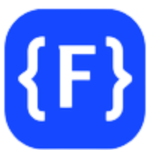Bloc, or Business Logic Component, is a popular design pattern and state management library used in Flutter app development. It aims to improve the organization and maintainability of your code by separating the user interface (UI) from the business logic. Here’s a breakdown of its key points:
Concept:
- Reactive approach: Bloc relies on a stream of events and states to manage application flow. Widgets (UI elements) trigger events, which are processed by Blocs (business logic units), and the resulting states are reflected back to the UI.
- Clear separation of concerns: This separation keeps the UI clean and focused on presentation, while Blocs handle complex logic and data manipulation behind the scenes.
- Improved testability and reusability: Blocs are self-contained units, making them easier to test and reuse across different parts of your app.
Benefits:
- Scalability: Large and complex apps benefit from the organized structure of Blocs.
- Maintainability: Code is easier to understand and modify due to clear separation of concerns.
- Testability: Individual Blocs can be easily tested in isolation.
- Reusability: Blocs can be reused across different parts of your app or even in other projects.
When building applications with the BLoC (Business Logic Component) pattern in Flutter, it is essential to have a well-organized folder structure that separates the different components of the application. In this article, we’ll explore the best practices for organizing the BLoC folder structure.
Why is a Good Folder Structure Important?
A good folder structure is essential for keeping the code organized, maintainable, and easy to understand. A well-organized folder structure helps developers to quickly find and modify code, avoid duplication, and maintain consistency across the project.
Best Practices for BLoC Folder Structure
1.Separate folders for UI and BLoC
Separating the UI and BLoC components into different folders is essential for maintainability. The UI folder should contain all the widgets and UI-related files, while the BLoC folder should contain all the files related to business logic.
2.Separate folders for each feature
It is also essential to separate each feature into its own folder. This helps keep the code organized and maintainable, as well as making it easier to find the relevant files. For example, if the application has a shopping cart feature, then there should be a shopping cart folder with all the files related to that feature.
3.Separate folders for the different layers of the BLoC pattern
The BLoC pattern consists of three layers: the UI layer, the BLoC layer, and the data layer. Each layer should have its own folder to keep the code organized and maintainable.
The UI layer folder should contain all the UI-related files, such as widgets, screens, and routes.
The BLoC layer folder should contain all the files related to business logic, such as the BLoC classes, events, and states.
The data layer folder should contain all the files related to data management, such as the repository classes, data models, and data sources.
4.Subfolders for events and states
Within the BLoC layer folder, it is also a good practice to create subfolders for the events and states. This helps keep the files organized and makes it easier to find the relevant files when working on a particular feature.
5.Naming conventions
Naming conventions are crucial for maintaining consistency and making it easier to find the relevant files. All files should be named using a descriptive name that clearly indicates their purpose. For example, the BLoC class for managing the shopping cart feature should be named ShoppingCartBloc.
6.Common folder
Finally, it can be helpful to create a common folder that contains all the files that are used across multiple features, such as utility classes or shared widgets.
Conclusion: Organizing the BLoC folder structure is essential for maintaining a clean and maintainable codebase. Separating the UI and BLoC components into different folders, separating features into their own folders, creating folders for each layer of the BLoC pattern, creating subfolders for events and states, using naming conventions, and creating a common folder are all best practices for organizing the BLoC folder structure. By following these practices, developers can create well-organized and maintainable codebases that are easier to work with and scale over time.


Leave a Reply